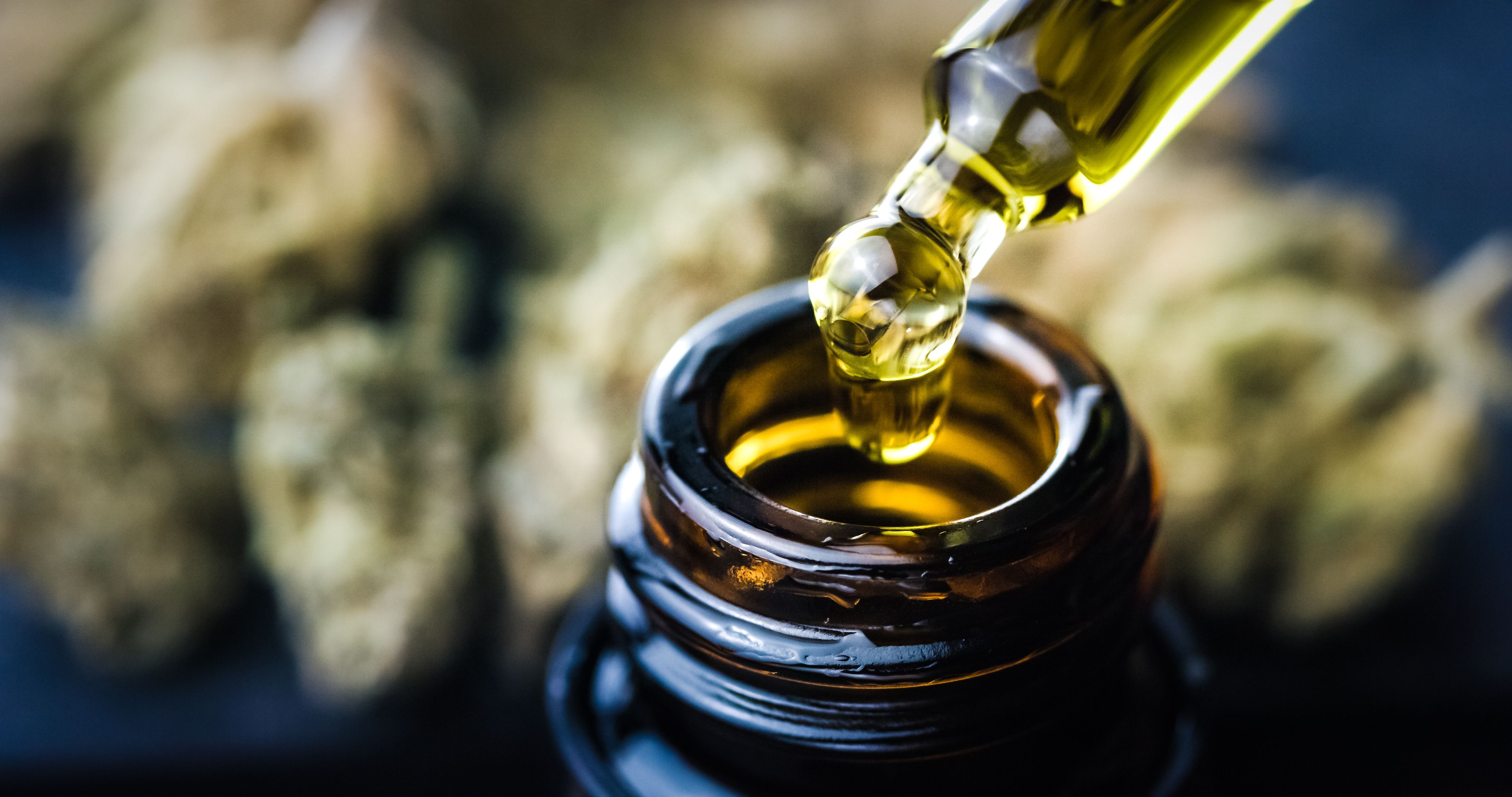A New System to Identify CBD in Cannabis Plants
A study published in GCB Bioenergy from Cornell University has led to the creation of a new means of identifying hemp plants that can exclusively create cannabidiol (CBD) (1).
CBD Hemp oil, Hand holding droplet of Cannabis oil against Marijuana buds. Alternative Medicine | Image Credit: © 24K-Production - stock.adobe.com

One of the most prominent cannabinoids, or substances found in cannabis plants, that are used in everyday life is CBD. CBD is often sold in an oil and has certain medicinal properties, unlike tetrahydrocannabinol (THC), a different cannabinoid that has more psychoactive effects when consumed (2). CBD itself is often used to treat a variety of conditions, such as child epilepsy (Lennox-Gastaut syndrome (LGS), Dravet syndrome, or tuberous sclerosis complex (TSC). Both cannabinoids can be prominent in different types of cannabis crops, such as hemp (Cannabis sativa L.). For CBD production, female plants that exclusively produce CBD and not THC are desired.
“The specialized cells that synthesize CBD called trichomes are much more abundant on female floral tissues than male tissue. Presumably this is for defense against insect pests and defense of seed production on females,” said Lawrence B. Smart, a professor at Cornell University told LCGC. This process, however, can prove difficult, since male and female plants are phenotypically indistinguishable until flowering begins, which can prove an issue since immature plants produce small amounts of cannabinoids.
To aid in distinguishing plant genders before flowering, the scientists created high-throughput PACE (PCR Allele Competitive Extension) assays for C. sativa plant sex and cannabinoid chemotype, which were then validated using different samples (2). PACE genotyping is a technology based on fluorescent, competitive, and allele-specific PCR genotyping. With this technology, researchers conducting high-volume experiments with large sample sets can benefit from its usage (3). The assay meant to analyze plants’ sex was validated using different samples of germplasm, successfully resolving male plants from female and monoecious plants. As for the cannabinoid chemotype assay, it revealed segregation in hemp populations, successfully distinguishing between plants that predominantly produced THC, predominantly CBD, and roughly equal amounts of the two cannabinoids. Additionally, they were able to discover that cultivar populations previously thought to be created only for CBD production were segregating phenotypically and genotypically. These findings provided useful tools for breeding and selecting different types of hemp early on in CBD production, with room to expand upon this study, such as gaining a “better understanding of the molecular mechanisms of sex determination in Cannabis sativa,” Smart said.
References
(1) Toth, J. A.; Stack, G. M.; Cala, A. R.; Carlson, C. H.; Wilk, R. L.; Crawford, J. L.; Viands, D. R.; Phillipe, G.; Smart, C. D.; Rose, J. K. C.; Smart, L. B. Development and validation of genetic markers for sex and cannabinoid chemotype in Cannabis sativa L. Glob. Change Biol. Bioenergy 2020, 12 (3), 213–222. DOI: https://doi.org/10.1111/gcbb.12667
(2) Understanding the Difference Between CBD and THC. San Antonio Recovery Center 2024.https://www.sanantoniorecoverycenter.com/rehab-blog/cbd-vs-thc/ (accessed 2024-1-9)
(3) PCR Allele Competitive Extension (PACE™) genotyping. Integrated DNA Technologies 2024. https://www.idtdna.com/pages/technology/qpcr-and-pcr/pcr-allele-competitive-extension-genotyping (accessed 2024-1-22)
New Method Explored for the Detection of CECs in Crops Irrigated with Contaminated Water
April 30th 2025This new study presents a validated QuEChERS–LC-MS/MS method for detecting eight persistent, mobile, and toxic substances in escarole, tomatoes, and tomato leaves irrigated with contaminated water.
University of Tasmania Researchers Explore Haloacetic Acid Determiniation in Water with capLC–MS
April 29th 2025Haloacetic acid detection has become important when analyzing drinking and swimming pool water. University of Tasmania researchers have begun applying capillary liquid chromatography as a means of detecting these substances.

.png&w=3840&q=75)

.png&w=3840&q=75)



.png&w=3840&q=75)



.png&w=3840&q=75)



